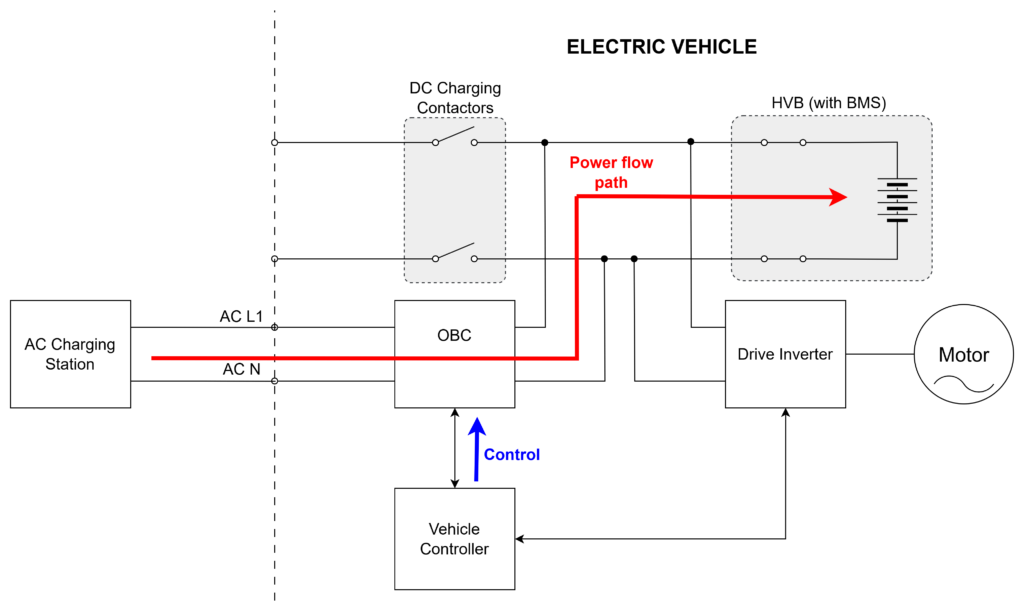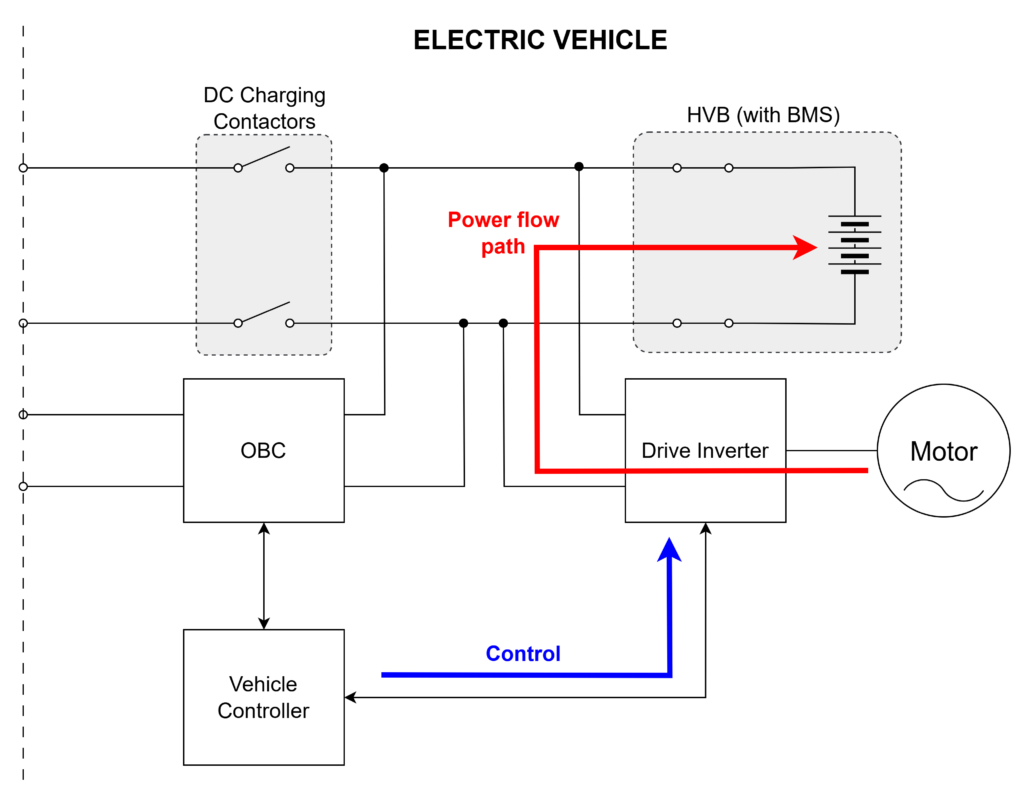Do EVs Need an OBC for Regenerative Charging (or Regenerative Braking)?
Electric vehicle (EV) batteries receive power in two primary ways: normal charging and regenerative charging. Normal charging involves conventional plug-in or wireless methods, while regenerative charging utilizes the drive motor system to recover energy.
A common misconception is that whenever a battery is charging from regeneration, the onboard charger (OBC) is always involved. However, this is not true. Let’s explore the details of these charging methods.
What is Normal Charging?
Normal charging, often referred to as plug-in charging or wireless charging, is the conventional method of replenishing an EV’s battery. It involves connecting the vehicle to an external power source, such as a home charging station, public charger, or fast-charging station.
Types of Normal Charging:
- AC Charging:
- Uses an onboard charger to convert AC power from the grid into DC power for the battery.
- Commonly used in home and public charging stations.
- DC Fast Charging:
- Bypasses the onboard charger and supplies direct DC power to the battery.
- Provides rapid charging at commercial charging stations.
Normal charging is essential for refueling an EV after extended usage, ensuring the battery is ready for the next journey.
Example of AC charging with OBC is shown below.

What is Regenerative Charging?
Regenerative charging, also known as regenerative braking, is a process that converts the kinetic energy generated while braking or coasting into electrical energy, which is then stored in the vehicle’s battery. Unlike normal charging, regenerative charging does not require an OBC. Instead, it is performed using the drive inverter.
Below is the example of regenerative charging representation.

How Regenerative Charging Works:
- When the vehicle is moving, the electric motor generates a back electromotive force (back EMF) due to its rotation.
- If power is no longer supplied to the motor (such as when coasting or braking), the motor acts as a generator.
- The vehicle controller commands the drive inverter to transfer power from the motor to the battery.
- The drive inverter converts this recovered energy and feeds it back into the battery while maintaining power limits set by the vehicle controller.
Key Benefits of Regenerative Charging:
- Improves vehicle’s energy efficiency by capturing and reusing energy that would otherwise be lost.
- Reduces mechanical brake wear, extending brake lifespan.
However, regenerative charging cannot fully recharge an EV’s battery—it only supplements normal charging. It is particularly beneficial in stop-and-go traffic, hilly terrains, and urban driving, where frequent deceleration occurs.
Both normal charging and regenerative charging play crucial roles in an EV’s operation. Normal charging is essential for fully replenishing the battery, while regenerative charging enhances efficiency by reclaiming energy that would otherwise be lost. However, regenerative charging alone is not sufficient for actual vehicle operation—it is a supplementary method to improve overall system efficiency.
EV Charging Explained – Everything you need to know about Electric Vehicle Charging